CUNEIFORM RECORDS ANNOUNCES ITS
JANUARY / FEBRUARY 2015 RELEASES
AND ITS EXPANDED WEB PRESENCE
Henry Kaiser & Ray Russell // The Kandinsky Effect
Mike Osborne // Schnellertollermeier // Soft Machine
___
Dear friends;
It’s Winter 2015, and Cuneiform is thrilled to begin its 31st year by launching 5 new releases of adventurous music. Three of these releases are new recordings of cutting-edge rock, avant jazz &/or 'beyond' music by Ray Russell & Henry Kaiser, The Kandinsky Effect, and Schnellertollermeier – artists based in the UK, the USA, France and Switzerland. Two of our new releases are archival recordings: a CD by Mike Osborne, featuring tapes from 1966 and 1970 that the British saxophonist made with Brit and South African musicians, and a CD and DVD by Soft Machine, featuring the British band's 1974 performance at the Montreux Jazz Festival. Looking over these Winter releases, of avant garde icons as well as rising stars, it's clear that Cuneiform today, in 2015, remains as committed to releasing boundary-defying, international music as it has since its founding, decades before.
We’ve witnessed a lot over the past 30 years at Cuneiform. When we began, the boundary-crossing music we championed surprised, confused and sometimes shocked or alienated critics and listeners. That's no longer the case: stylistic inclusiveness is far more accepted. But we’ve been noticing recently that, while borders between musical genres are melting faster than the polar ice caps, ideologic boundaries between people and cultures, nations and religions are rising anew, and ever-higher and more opaque. Our hearts go out to our friends and colleagues in France, following the Charlie Hebdo attacks, and to victims of recent sectarian violence elsewhere. We share only one physical world, one living planet; may mankind learn to cherish it and each other, and live, compassionately, with open hearts.
You may have noticed that Cuneiform has been dramatically expanding its presence in the VIRTUAL world. To celebrate Cuneiform turning 30 in 2014, we devoted our 30th Anniversary Year to completing a mega cyber-reconstruction project: a series of web-based platforms to promote the releases that we globally launch from our Washington DC/Silver Spring MD based office. These include:
CUNEIFORM RECORDS WEBSITE
http://www.cuneiformrecords.com
Visit our newly-designed website to learn about new releases, sign up for our email lists, and link to our social media sites (Home); read about Cuneiform’s artists and albums, and hear samples from hundreds of albums released since 1984 (see Artists); get info on upcoming concerts by Cuneiform artists worldwide (see Tours); read Cuneiform News; watch our Video spotlight; read a brief history of our label (see About); purchase records (see iTunes, Bandcamp, & Amazon links, or see Store), and obtain releases for your store through our worldwide Distributors (see Distributors).
CUNEIFORM RECORDS on FACEBOOK
https://www.facebook.com/cuneiformrecords
We’ve expanded our Facebook presence, and look forward to YOUR contributions. Come join in the fun
SOUNDCLOUD
https://soundcloud.com/cuneiformrecords
To give exposure to all of the music – old and new alike–in Cuneiform’s broad catalogue, we routinely rotate samples.
TWITTER
https://twitter.com/cuneiformrecord
A timely source of news about both the world of Cuneiform Records AND other news topics that we find interesting and think that you will, too.
BANDCAMP
https://cuneiformrecords.bandcamp.com
All of Cuneiform’s releases are available for sale on Bandcamp, which is perhaps the most Fair Trade digital sales system that exists.
YOUTUBE
https://www.youtube.com/CuneiformRecords
Explore the world of Cuneiform Records on YouTube! You can hear a free track from every album Cuneiform's released; see Music Videos and Previews created by Cuneiform artists; and see both professional and amateur videos of live shows. We’re continually expanding the material on our station, so visit often.
Best regards;http://www.cuneiformrecords.com
Visit our newly-designed website to learn about new releases, sign up for our email lists, and link to our social media sites (Home); read about Cuneiform’s artists and albums, and hear samples from hundreds of albums released since 1984 (see Artists); get info on upcoming concerts by Cuneiform artists worldwide (see Tours); read Cuneiform News; watch our Video spotlight; read a brief history of our label (see About); purchase records (see iTunes, Bandcamp, & Amazon links, or see Store), and obtain releases for your store through our worldwide Distributors (see Distributors).
CUNEIFORM RECORDS on FACEBOOK
https://www.facebook.com/cuneiformrecords
We’ve expanded our Facebook presence, and look forward to YOUR contributions. Come join in the fun
SOUNDCLOUD
https://soundcloud.com/cuneiformrecords
To give exposure to all of the music – old and new alike–in Cuneiform’s broad catalogue, we routinely rotate samples.
https://twitter.com/cuneiformrecord
A timely source of news about both the world of Cuneiform Records AND other news topics that we find interesting and think that you will, too.
BANDCAMP
https://cuneiformrecords.bandcamp.com
All of Cuneiform’s releases are available for sale on Bandcamp, which is perhaps the most Fair Trade digital sales system that exists.
YOUTUBE
https://www.youtube.com/CuneiformRecords
Explore the world of Cuneiform Records on YouTube! You can hear a free track from every album Cuneiform's released; see Music Videos and Previews created by Cuneiform artists; and see both professional and amateur videos of live shows. We’re continually expanding the material on our station, so visit often.
Joyce, Director of Publicity & Promo
for the Cuneiform Records Team: Steve, Javier, Simon, Lindsey, Mark, Bill & the Intern Team
visit us online:
www.cuneiformrecords.com
www.twitter.com/cuneiformrecord
www.facebook.com/cuneiformrecords
-
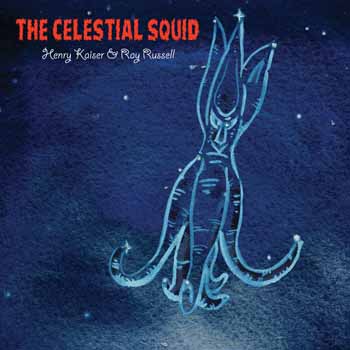 |
Henry Kaiser & Ray Russell The Celestial Squid Genre: Jazz / Avant-Jazz / Improv Release Date: 2/3/2015 |
 "guKTen LIMPo" "guKTen LIMPo"stream/share: @SoundCloud / @Bandcamp / @YouTube [more info below] |
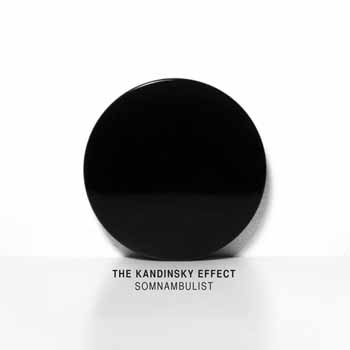 |
The Kandinsky Effect Somnambulist Genre: Jazz / Post-Jazz / Ambient Release Date: 1/20/2015 |
 "Somnambulist" "Somnambulist"stream: @SoundCloud / @Bandcamp / @Youtube [more info below] |
 |
Mike Osborne Dawn Genre: Jazz / Improv / Brit Jazz Release Date: 2/3/2015 |
 "An Idea" "An Idea"stream: @SoundCloud / @Bandcamp / @YouTube [more info below] |
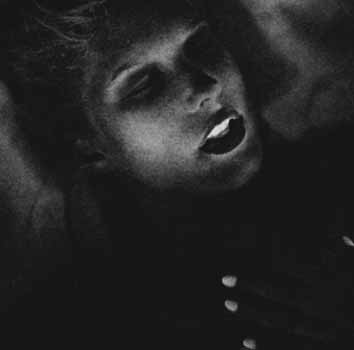 |
Schnellertollermeier X Genre: Rock / Experimental / Brutal Jazz / Minimalist Rock Release Date: 1/20/2015 |
 "X" [excerpt] "X" [excerpt]stream: @SoundCloud / @Bandcamp / @YouTube [more info below] |
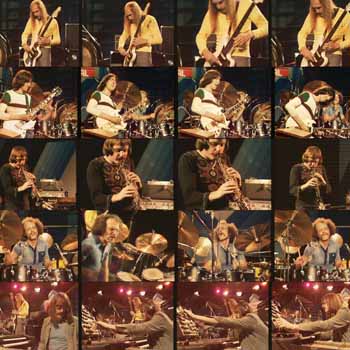 |
Soft Machine Switzerland 1974 Genre: Canterbury / Fusion / Jazz Rock Release Date: 2/3/2015 |
 "Hazard Profile" [excerpt] "Hazard Profile" [excerpt]stream: @SoundCloud / @Bandcamp / @YouTube [more info below] |
-----
CUNEIFORM'S NEW RELEASES:
JANUARY / FEBRUARY 2015
Uncaged Session Ace Ray Russell Makes Long-Awaited Return to Guitar's Outer Limits Alongside Experimental Guitarist Henry Kaiser on The Celestial Squid
HENRY KAISER & RAY RUSSELL
THE CELESTIAL SQUID
Cat. #: Rune 403, Format: CD / DIGITAL DOWNLOAD
Genre: Jazz / Avant-Jazz / Improv, Release Date: February 3, 2015
 STREAM/SHARE: "guKTen LIMPo"
STREAM/SHARE: "guKTen LIMPo"
@SoundCloud / @Bandcamp / @YouTube
CUNEIFORM'S NEW RELEASES:
JANUARY / FEBRUARY 2015
Uncaged Session Ace Ray Russell Makes Long-Awaited Return to Guitar's Outer Limits Alongside Experimental Guitarist Henry Kaiser on The Celestial Squid
 |
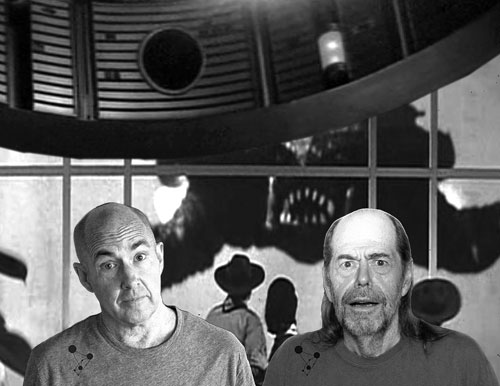 |
HENRY KAISER & RAY RUSSELL
THE CELESTIAL SQUID
Cat. #: Rune 403, Format: CD / DIGITAL DOWNLOAD
Genre: Jazz / Avant-Jazz / Improv, Release Date: February 3, 2015
 STREAM/SHARE: "guKTen LIMPo"
STREAM/SHARE: "guKTen LIMPo"@SoundCloud / @Bandcamp / @YouTube
Guitar summits don't ascend higher than when legendary British free-jazz pioneer and longtime session ace Ray Russell meets the brilliant California avant-improv overachiever and Antarctic diver Henry Kaiser in the realm of The Celestial Squid. An album as cosmically evocative as its title, The Celestial Squid marks both a promising new partnership and a return to the outer-limits sensibility that informed Russell's earliest work. With sixteen albums as a leader and more than countless session performances to his credit, including the early James Bond film scores, Russell is returning to his bone-rattling, noise-rocking roots for the first time since 1971. You'll be shaken and stirred as Kaiser, Russell, and eight super friends deliver a no-holds-barred, free-range sonic cage match. They evoke improvised music's past, present, and future while proving that free jazz can still be good, clean, liberating fun.
Russell created some of the early '70s' most outrageously outside music. Live at the ICA: June 11th 1971 is a particularly hallmark work of guitar shock-and-awe. Russell's "stabbing, singing notes and psychotic runs up the fretboard have nothing to do with scalular architecture," wrote All Music's Thom Jurek, "but rather with viscera and tonal exploration." Russell anticipated the wildest and most intrepid vibrations of Terje Rypdal, Dave Fuzinski, Sonic Youth, Keiji Haino, Tisziji Muñoz, Alan Licht (who contributes liner notes), and their boundary-dissolving ilk. Russell is hardly a niche performer, though. Untold millions of music and film fans have actually, if unknowingly, already enjoyed Russell's riffs – at least if they saw any of the James Bond films that John Barry scored, beginning with From Dr. No in 1962.
Although he subsequently released several highly regarded solo albums –including his 2006 Cuneiform debut Goodbye Svengali, a tribute to Gil Evans, and 2013’s Now, More Than Ever, on Abstract Logix – Russell would not make an album anywhere near as potent as June 11th 1971 until West Coast guitar experimentalist Henry Kaiser called him out of the blue and asked if he would be interested in co-leading an ensemble in the style of his '71 masterpiece. Russell was surprised and delighted by the offer, and readily accepted. Why had he waited so long to once again explore the free-jazz spaceways you might well wonder? Simple – no one had asked him to do so.
But inviting his favorite guitarists to come out and play is one of the many different things that guitarist-producer-filmmaker-diver Henry Kaiser does. Since picking up the guitar at the relatively late age of twenty, Kaiser has been erasing the boundaries of improvised music with his unique combination of humor and discipline for nearly four decades. His discography includes scrupulously "outside" solo albums such as Aloha, It's a Wonderful Life, Everything Forever, and Domo Arigato Derek Sensei (a tribute to musical mentor Derek Bailey); exciting group efforts such as his remarkably faithful Jerry Garcia tribute project, Eternity Blue, and Live, Love, Larf & Loaf alongside John French, Fred Frith, and Richard Thompson; and influential cross-cultural collaborations with musicians from Asia (Buddhist Stories), Scandinavia (The Sweet Sunny North), Russia (Popular Science), and Madagascar (A World Out of Time, with David Lindley). When not making music, he has produced movies with Werner Herzog, directed many hours of science TV himself, and recently dived for ten seasons beneath Antarctic ice as a research scientist.
While he may not have been prolific as a soloist, Ray Russell has been anything but inactive. Since the mid-'60s, Russell's studio work has made him one of the world's most highly respected session musician-composers. Over four decades, Russell's credits would include dates with Lulu, David Bowie, Paul McCartney, Gil Evans, Phil Collins, Art Garfunkel, Marvin Gaye, and Heaven 17. A member of the John Barry Seven during the sixties, Russell has appeared on more than a half-dozen of the film composer's James Bond scores – which is to say that nearly everyone on the planet has heard him at some point. And where John McLaughlin found fame and fortune abroad with Miles Davis and the Mahavishnu Orchestra, Ray Russell forged a much more English parallel career in jazz.
So on April 12, 2014, Henry Kaiser and Ray Russell – along with drummers Weasel Walter and William Winant, bassists Michael Manring (electric) and Damon Smith (acoustic), and saxophonists Steve Adams, Joshua Allen, Phillip Greenlief, and Aram Shelton – entered Berkeley, California's Fantasy Studios for a day-long session that resulted in The Celestial Squid, a nearly eighty-minute embryonic journey through the deepest waters and most cosmic heights of improvised music. Except for melodic heads and compositional structures, everything on The Celestial Squid is improvised, down to some astonishing extemporaneous horn arrangements. While The Celestial Squid echoes the raw energy and youthful bravado of Russell's earliest achievements, this music synergizes the combined power and imagination of all ten of these musical masters into a force to be reckoned with.
While the doubling of musicians is reminiscent of Ornette Coleman's Prime Time, The Celestial Squid marks Russell's first recording with a second lead guitarist. Not coincidentally, Russell was one of Kaiser's early guitar influences and, as such, enters Kaiser's discography on the latest in a series of albums the Santa Cruz-based musician has recorded with other guitarists he admires, including Derek Bailey, David Lindley, Richard Thompson, Jerry Garcia, and Harvey Mandel, among many others. The Celestial Squid is all about double trouble, and Kaiser takes Russell's earliest and most sonically extreme guitar vocabulary as the launching pad for the some of the most daring yet sympathetic playing of his career. Russell, meanwhile, plays with an unerring sense of control no matter how far afield he flies, drawing upon the well-honed and thoroughly unique jazz, rock, and funk modalities he has developed over his past several solo albums.
The Celestial Squid kicks off with Steve Adams' "guKTen LIMPo," an inky blast of futuristic jazz-rock featuring stuttering horn lines, double-drum fever, whammy-bar wizardry, basses in your faces, and more maximalist freedom in nine minutes than even the wickedest messengers pack into a double album. "In Another Life" is a Russell ballad in which the guitarists unwind Theremin-like lines over the saxophone quartet in a state of constant prologue highlighted by Kaiser's digitally delayed elfen communications with the Deep Unreal. The funk returns in "That Darn Squid," a playfully epic Kaiser tune (or maybe 'toon) suggesting aquatic, poly-tempo shenanigans, choreographed by Miles at his most dangerously electric.
Kaiser offers a short and spiky baritone-acoustic introduction to Adams' "The Enumeration" (dedicated to the late saxophonist Glenn Spearman), which levitates slowly and eventually explodes into a serious frenzy before returning to its upright position. Drummer Weasel Walter's "Victims" crashes through several walls of sound and mystery before arriving at its merciless conclusion. Russell returns with "Disinterested Bystander," a stately spy-rock shuffle that includes much of the guitarists' saltiest and most conversational soloing. The Celestial Squid closes with its longest and most abstract track, saxophonist Joshua Allen's "Construction #14," which features the sax quartet as prime movers exploring a complicated score composed and conducted by Josh in Cecil Taylor's cell structure notation, amid thick, constantly changing waves and cross-currents of sonic material. Somehow the guitarists manage to escape being crashed against the rocks of the two drummers and emerge unscathed from the maelstrom.
PROMOTIONAL TRACK //
If you'd like to share music from this release with your friends, please feel free to use the following track:
 "guKTen LIMPo": @SoundCloud / @Bandcamp / @YouTube
"guKTen LIMPo": @SoundCloud / @Bandcamp / @YouTubeVIDEO //
[The Celestial Squid Album Preview/EPK + Studio Footage]
PURCHASE LINKS //
AMAZON - BANDCAMP - WAYSIDE MUSIC
ARTIST SITES //
www.henrykaiserguitar.com - www.rayrussell.co.uk
http://www.cuneiformrecords.com
-----
Weaving Jazz & Post-Rock, Soundscapes & Electronica
Into Tunes that Transcend Genre, Place, and Time
Globetrotting Trio, The Kandinsky Effect,
Create Somnambulist,
A Sonic Journey through 21st Century Jazz Dreamtime
THE KANDINSKY EFFECT
SOMNAMBULIST
Cat. #: Rune 408, Format: CD / DIGITAL DOWNLOAD
Genre: Jazz / Post-Jazz / Ambient
Release Date: January 20, 2015
 STREAM/SHARE: "Somnambulist"
STREAM/SHARE: "Somnambulist"
@SOUNDCLOUD / @BANDCAMP / @YOUTUBE
Weaving Jazz & Post-Rock, Soundscapes & Electronica
Into Tunes that Transcend Genre, Place, and Time
Globetrotting Trio, The Kandinsky Effect,
Create Somnambulist,
A Sonic Journey through 21st Century Jazz Dreamtime
 |
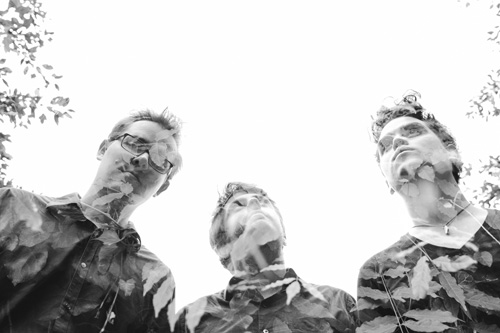 |
THE KANDINSKY EFFECT
SOMNAMBULIST
Cat. #: Rune 408, Format: CD / DIGITAL DOWNLOAD
Genre: Jazz / Post-Jazz / Ambient
Release Date: January 20, 2015
 STREAM/SHARE: "Somnambulist"
STREAM/SHARE: "Somnambulist"@SOUNDCLOUD / @BANDCAMP / @YOUTUBE
On Somnambulist, The Kandinsky Effect wields its musical power in a welcoming way. Their 3rd album (and 2nd for Cuneiform Records) isn't form-eschewing free jazz, nor are the tonalities the trio employs particularly "out." The real revelation – and revolution – comes simply in the way saxophonist Warren Walker, bassist Gael Petrina, and drummer Caleb Dolister organize sound.
The Paris-and-New York-based trio is a purist's nightmare -- and not only that of a jazz purist either. Since their first, self-titled album came out in 2010, The Kandinsky Effect has been boldly blending jazz with elements of everything from hip-hop to electronic music, making for an idiosyncratic amalgam that never goes exactly where you might expect it to.
If you can envision a world in which a contemporary jazz giant like Joshua Redman jams with The Roots and electronic instigator Aphex Twin, then you have a head start on your ability to assimilate the sound of Somnambulist. But nothing can completely prepare you for its marriage of groove, atmosphere, and incendiary playing.
The Kandinsky Effect feel that this album is their most effectively conceived collection of music to date. "I feel like I had a clearer idea of what I was looking for in the sound of my compositions and how to approach writing for this group," says bandleader Walker, " it's a sort of coming-of-age piece."
For an album so full of fire, Somnambulist has some surprisingly leisurely origins. Much of the material was composed by Walker in Dominical, Costa Rica, during a lengthy stay in a beach-side shack. "I was there for a few months just writing music," he recalls, "playing saxophone and surfing to see what would come out from me compositionally in a totally different, non-city environment."
As it turns out, though, there was a fair amount of psychic friction to be found in the aforementioned seemingly bucolic environment during Walker's time there. "'Tagzhout'" was written in Tagzhout, a small fishing/surfing village in Morocco," explains Walker. "It was written on the day of Eid, a religious holiday where everyone slaughters a goat in the street. To me the whole experience was very dark, and there was blood everywhere on the streets. On the days leading up to it people are driving with live goats tied to their roof…witnessing these things may have shaped this tune a little."
But that tune, with Walker's bobbing and weaving sax riding the roiling rhythms of Petrina and Dolister, isn't the only one with a dark backstory. And Walker’s compositions aren’t the only ones on Somnambulist born in exotic locales. Petrina’s tunes were written in San Remo, Italy and Tulum, Mexico, while the origin for one of Dolister’s works, “Annabelle Chases a Bug,” can be traced to memories of a cat in Nashville, Tennessee. Another Dolister tune, "Sad Fly" has its origins as one of the accompaniments to a decidedly quirky animated film named Spacefish, which the drummer describes thusly: "In the animation, 'Sad Flies' are a swarm of tiny insects that play sad music to trick unsuspecting travelers, slowly leading them into a massive suicidal depression so that they can feed on their eventual corpses." Don't be too afraid though, Dolister says, "the version Kandinsky Effect plays is nowhere near as dark, but much more about developing a feeling of apprehension."
The ability to incorporate a broad range of musical, geographical, and emotional influences into their music is at the core of The Kandinsky Effect's makeup. Formed 2007 in Paris, France, the original lineup began performing as the Warren Walker Trio, and included Petrina and Parisian drummer Gautier Garrigue. Not long after, they named themselves The Kandinsky Effect in homage to Russian painter Wassily Kandinsky, and recorded a self-named album, released in 2010 on SNP Records. While influenced by hip-hop and electronics, their debut album was much more rooted in jazz and featured mostly acoustic instrumentation. Dolister joined for The Kandinsky Effect’s Cuneiform debut, 2013’s Synesthesia, which began to expand the band's sound, blending everything from Petrina’s fondness for electronica (IDM) to Dolister’s love of heavy rock bands like Meshuggah, and Walker’s unique approach to composition and electronic soundscapes.
Over the years, the group has traveled extensively to perform with multiple trips and tours to Europe, Asia, and North America, perfecting what Dolister calls their "intellectual groove instrumental music." And from the slip-sliding beats and slithering sax lines of opening track "Copalchi Distress Signal" to the insistent pulse and layered, lyrical melodies of closing cut "Muji," there's a feeling of the refinement process reaching fruition on Somnambulist.
"Somnambulist is definitely a step forward when it comes to composition and execution," assesses Dolister. "The album documents the growth and identity of the band over the last several years… that’s displayed the most in the compositions. This is the band’s first record in which all of the songs were composed or arranged with the intention of being on this record. …we coordinated the writing to decide whether each composition would compliment or contrast another, or create a certain reaction, or use a specific theme. …this gives the album a much stronger listening experience from start to finish. We learned a lot from making our previous album, Synesthesia…With Somnambulist, we had a much clearer idea of how to approach the recording process. In general, Somnambulist is a much more cohesive statement."
PROMOTIONAL TRACK //
If you'd like to share music from this release with your friends, please feel free to use the following track:
 "Somnambulist": @SOUNDCLOUD / @BANDCAMP / @YOUTUBE
"Somnambulist": @SOUNDCLOUD / @BANDCAMP / @YOUTUBEVIDEO //
[Somnambulist Album Preview/EPK]
PURCHASE LINKS //
ITUNES - AMAZON - BANDCAMP - WAYSIDE MUSIC
ARTIST SITES //
www.thekandinskyeffect.com – www.facebook.com/TheKandinskyEffect
www.cuneiformrecords.com
-----
Archival Release Dawn Unearths Important Early Sessions By Seminal British Alto Saxophonist Mike Osborne Shining Light On First Stirrings Of Truly Native English Jazz
MIKE OSBORNE
DAWN
Cat. #: Rune 392, Format: CD / DIGITAL DOWNLOAD
Genre: Jazz / Improv / Brit Jazz, Release Date: February 3, 2015
STREAM/SHARE: "An Idea"
@SOUNDCLOUD / @BANDCAMP / @YOUTUBE
Archival Release Dawn Unearths Important Early Sessions By Seminal British Alto Saxophonist Mike Osborne Shining Light On First Stirrings Of Truly Native English Jazz
 |
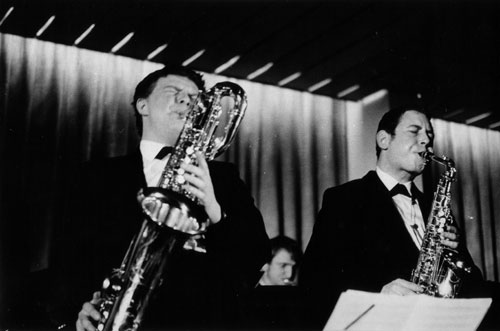 |
MIKE OSBORNE
DAWN
Cat. #: Rune 392, Format: CD / DIGITAL DOWNLOAD
Genre: Jazz / Improv / Brit Jazz, Release Date: February 3, 2015
STREAM/SHARE: "An Idea"
@SOUNDCLOUD / @BANDCAMP / @YOUTUBE
In the history of British jazz, there were few voices as unmistakable as Mike Osborne's alto saxophone. It could be found in big bands as disparate as those of Mike Westbrook and Chris McGregor; in major small-group sessions led by John Surman, Ric Colbeck, Alan Skidmore and Harry Beckett; and, most importantly, his own handful of albums as a leader. Dawn presents Osborne in both his earliest session extant, as a co-leader with Surman of an almost-traditional quartet from 1966, and in 1970 with the first known recording of his mighty trio with the transplanted South African rhythm team of Harry Miller and Louis Moholo. These unearthed 1966 and 1970 recordings, first released by Cuneiform Records, not only fill in important gaps in Osborne's own discography but in the history of British jazz as a whole.
Osborne's story is one of the tragedies of British jazz. Within 15 years of his first recordings, simmering mental illness had taken over and forced him away from his musical compatriots in vibrant London and brought him back to his native Hereford (near the Welsh border), where he lived under care until his death in 2007, his saxophone silent for decades. But during his career, Osborne was one of British jazz's most versatile players, working with members of the various spheres creating a new indigenous British jazz: the Spontaneous Music Ensemble circle; the crowd around the South African Blue Notes; members of the Canterbury Scene; and the modernists centered on John Surman. Dawn presents Osborne in two of these settings, one recorded during the first birthing pains of British jazz and the other when its reach and reputation had already been established.
Dawn presents Osborne in reverse chronological order. The first six tracks are by his trio, his main vehicle as a leader and featuring his most long-standing partners in Miller and Moholo (whether under Osborne's leadership or in other groups, this trio recorded together nearly 20 times from 1970-77). The band only made two albums during its lifetime, Bordercrossing and All Night Long, both for the legendary British label Ogun (run by Miller and his wife Hazel). Dawn, three tracks each from August and December 1970, is significant for presenting the trio years before these sessions and demonstrating that the group's sound, marked by Osborne's tart melodicism, Miller's brawny lines and Moholo's propulsive freedom, was established at the beginning of their partnership. The material played by the group is a fascinating selection: From the first portion, "Scotch Pearl" would appear years later on All Night Long, followed by the evocative "Dawn" and closing with what sounds like a deconstruction of Herbie Hancock's "Jack Rabbit"; two of the December 1970 pieces are hitherto unknown, bookending a fascinating version of "1st", which would appear four years later on the eponymous debut of S.O.S., the saxophone trio of Osborne, Surman and Alan Skidmore, the template for later groups of the same type such as World Saxophone Quartet and ROVA.
Listeners will travel back four years earlier with Dawn's second half, taken from a period when names now famous were just coming out from the shadow of Britain's traditional jazz scene. Osborne, 24, is there in his first document, Surman, 21, in only his second, supported by Miller and the "elder" of the quartet, drummer Alan Jackson, who would play alongside the others in the years to come with Mike Westbrook and in Surman's own groups. This was an era of formal suits and allegiance to the innovations in American jazz happening on labels like Blue Note and ESP-Disk', reflected in the performances and the material. The quartet plays pithy versions of Pharoah Sanders' "Seven By Seven" (taken from the saxophonist's 1964 debut for ESP-Disk'), Carla Bley's "And Now The Queen" (made famous by her then-husband pianist Paul in two versions recorded for ESP-Disk' in 1964 and 1965) and Booker Little's "Aggression", previously only played by Eric Dolphy's 1961 quintet. There is one original, Osborne's "An Idea", presaging the composer's way with soaring melodies. This part of Dawn may only be 20 minutes but don't let it's length blind you to its preciousness; the importance of hearing Osborne and Surman in such a formative stage cannot be overstated, given their later contributions (in Surman's case, still continuing to this day).
Dawn continues Cuneiform's valiant efforts in presenting crucial documents of British jazz, coming on the heels of releases like S.O.S.'s Looking For The Next One and Surman's Flashpoint: NDR Jazz Workshop (April '69), both of which have expanded Osborne's discography and helped keep his musical memory alive. With jazz becoming increasingly international, it is vital for the foundation of each country's oeuvre to be known; those who appreciate British jazz and wish to learn more about its history will seek out Mike Osborne for the creative force he was during his (sadly) truncated career. Dawn, Osborne front and center, in contexts that would define his future, is a musical Rosetta Stone but also simply wonderful music.
PROMOTIONAL TRACK //
If you'd like to share music from this release with your friends, please feel free to use the following track:
 "An Idea" @SOUNDCLOUD / @BANDCAMP / @YOUTUBE
"An Idea" @SOUNDCLOUD / @BANDCAMP / @YOUTUBEPURCHASE LINKS //
ITUNES - AMAZON - BANDCAMP - WAYSIDE MUSIC
ARTIST SITES //
www.cuneiformrecords.com
[GO BACK TO NEW RELEASE LIST]
-----
On X, Switzerland’s Underground-Rock Emerging Stars
Schnellertollermeier
Sharpen their Edge, Intensify their Vision
& Carve Out a Spot on the Global Stage
SCHNELLERTOLLERMEIER
X
Cat. #: Rune 402, Format: CD / DIGITAL DOWNLOAD
Genre: Rock / Experimental / Brutal Jazz / Minimalist Rock
Release Date: January 20, 2015
STREAM/SHARE: "X" [excerpt]
@SOUNDCLOUD / @BANDCAMP / @YOUTUBE
On X, Switzerland’s Underground-Rock Emerging Stars
Schnellertollermeier
Sharpen their Edge, Intensify their Vision
& Carve Out a Spot on the Global Stage
 |
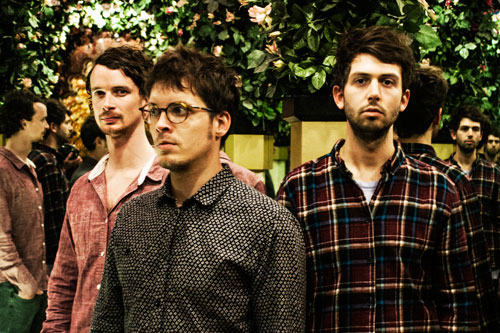 |
SCHNELLERTOLLERMEIER
X
Cat. #: Rune 402, Format: CD / DIGITAL DOWNLOAD
Genre: Rock / Experimental / Brutal Jazz / Minimalist Rock
Release Date: January 20, 2015
STREAM/SHARE: "X" [excerpt]
@SOUNDCLOUD / @BANDCAMP / @YOUTUBE
Brutal jazz /minimalist rock power trio Schnellertollermeier don’t screw around. Their uncompromising attitude is even apparent before you hear a note of their music -- it's right there in that deliberate tongue-twister of a name. On X, their Cuneiform Records debut, Schnellertollermeier boldly emerge from their key position in Switzerland’s underground rock scene with sharpened sonic knives, dialed up intensity, and laser-edged tunes to carve out a spot for themselves on the international stage. X is the young trio’s third recording, and in it they don't merely redefine their sound, they reinvent it. The tunes the band came up with -- after cloistering themselves away in a house in the Swiss mountains that served as their musical mad-scientist's laboratory -- recast the traditional function of the guitar-bass-drums lineup, expanding it into new territory and combining the brute force of Schnellertollermeier's 2008 debut with the conceptualism of their second album for something that's ultimately beyond the scope of either one. The Alps had given the trio space to let their imaginations soar. Against the sublime mountain backdrop, they perfected stark, powerful compositions and expanded their ideas. While later recording, they continued their experiments, playing with sound, and even recording reflections on glass to enhance their music’s natural brilliance.
The resultant album, X, is a masterful work of instrumental musical intensity. The songs, whether long or short, crushing or ambient, have absolutely no padding on them. The challenging, sometimes downright confrontational mix of jazz, minimalism, experimental rock, noise, punk, free improv, modern composition, avant-garde and electronic influences erupting throughout X is what this genre-blind trio of 30-year-old musicians effortlessly, even unconsciously, does, obeying only internal logic. Refreshing, highly-energized and original, their music can perhaps be compared with other beyond-genre bands, a crossing of Zs, Marc Ribot’s Ceramic Dog and Ben Frost.
The album is named for the 20-minute title suite that occupies its first half, though "occupies" is probably too passive a term for a piece that alternately hammers you into submission and plays a haunting hide-and-seek game with your nervous system via its sturm und drang dynamics and breathtaking stop-start structures. “X,” the record's centrepiece, is a suite composed of four parts, and named after the letter that “stands for these four parts”. On “X,” the trio aimed to become more like a single mighty instrument than three distinct players. It's an idea that can be traced at least as far back as Ornette Coleman's concept of "harmolodic" music, where the whole band is playing the melody, harmony, and rhythm together instead of individual instruments staking out exclusive territory. But when it comes into play via the piledriver rhythms and crushing riffs of this album's namesake cut, it makes for a strikingly visceral impact – you don't so much listen to the music as feel it…in your gut.
The rest of the record hits just as hard, even when the band drops the dynamics down a touch. Just as it was originally envisioned, X is truly the sound of Schneller, Troller, and Meier disappearing into the bigger, bolder entity that is Schnellertollermeier, from the almost tribal beats of "Backyard Lipstick" to the careful balance between control and chaos played out in "Riot," which offers an idea of what it might feel like to live inside a cuckoo clock; from the dark ambience of "Sing for Me" to the thrash-progfrenzy of "Massacre Du Printemps" and the cinematic sprawl of the expansive-but-urgent minimal/post-rock closing cut, challengingly titled "///\\\///."
Listening to the album, one doesn’t focus on any single performer; in fact, the band felt that here it had finally achieved its goal to “sound like one compact organism, with every element having its own importance and clear function.” Schnellertollermeier’s very name celebrates the fact that it is a single-minded entity, a trio of musicians melding their minds and functioning as a single organism. The band’s name is a creative -- as opposed to literal -- combination of the 3 members' surnames. Guitarist Manuel Troller, bassist Andi Schnellmann, and drummer David Meier, are all eclectic souls versed in the realms of rock, jazz, classical, and more. Schnellmann earned a degree from the Jazz School of Lucerne and toured with the international Swiss Pop Star Sophie Hunger; so did Troller, who studied with British art-rock guitar legend Fred Frith and has collaborated with for example famed U.S. jazz drummer/composer Gerry Hemingway and internationally acclaimed jazz-funk conceptualists Nik Bartsch's Ronin Rhythm Clan; Meier also works with improv outfit Things to Sounds, plays in Christoph Gallio’s Day & Taxi and in the international band Trio Riot among others.
While two of the bandmembers had known each other since High School, Schnellertollermeier formed in 2006, when their paths again crossed at the School of Music in Lucerne. They made their debut recording in 2008, the album Holz, whose influences ranged from Tim Berne to John Abercrombie to Mr. Bungle and more. Blending fiercely heavy rock, left-field jazz, and daring free improv in a dizzying sonic swirl, Holz struck a sonic nerve in Switzerland and generated significant buzz. The album and frequent live shows helped transform Schnellertollermeier into underground sensations. The trio soon started working on new material, seeking a more personal sound, both compositionally and improvisationally. The follow-up album, Zorn einen ehmer üttert stem!! (Veto Records), came out in 2010. It simultaneously expanded and refined the band's musical vocabulary, as new elements from modern classical music, minimal and experimental music, and noise found their way into Schnellertollermeier’s playing and composing. Enthusiastically received by critics and the public alike, Zorn… led to Schnellertollermeier playing in prized clubs in their homeland, and in numerous festival performances abroad, from Austria to Russia.
On X, Schnellertollermeier transformed their sound again into something new, and larger; former 'traditional jazz' elements have been subsumed by the brute energy from rock and experimental music, as well as improvisational soundscapes, minimal music and, finally, jazz in the modern, broad, experimental sense. After writing their compositions in the Alps, and before recording, the group test the material on the road, touring extensively in Switzerland, Russia and Austria.
Finally, they painstakingly recorded it, going beyond any procedures they’d previously done on their own or others’ recordings. In their words:
“For the recording, we also did a lot of research, planned the room/studio/miking-situation really precisely. We used many more microphones than we ever did before (also more than in other bands’ recordings) – For example, the drums and its room were recorded with 14 microphones, also recording the reflections on glass to get a lot of natural brilliance. As you would imagine, the mixing process was exciting, but also sometimes a b****“!”
With the intensity ratcheted up even further than before, the compositional approach more all-encompassing than on previous albums, and the overall sonic heft of the band reaching what can only be considered maximum capacity (at least for normal human beings), X stands as Schnellertollermeier's most resonant recording to date. Following X’s worldwide release, Schnellertollermeier will be touring extensively in Switzerland and at jazz, rock and experimental music festivals abroad.
PROMOTIONAL TRACKS //
If you'd like to share music from this release with your friends, please feel free to use the following track:
 "X" [excerpt]: @SOUNDCLOUD / @BANDCAMP / @YOUTUBE
"X" [excerpt]: @SOUNDCLOUD / @BANDCAMP / @YOUTUBEPURCHASE LINKS //
ITUNES - AMAZON - BANDCAMP - WAYSIDE MUSIC
ARTIST SITES //
www.schnellertollermeier.com - www.cuneiformrecords.com
[GO BACK TO NEW RELEASE LIST]
-----
Cuneiform Records Release Classic 1974
Bundles-Era Soft Machine Performance
Featuring Allan Holdsworth On Guitar
And Filmed at One of Europe’s Most Esteemed Jazz Festivals
As A Dual DVD+CD Package
SOFT MACHINE
SWITZERLAND 1974
Cat. #: Rune 395/396, Format: CD+DVD
Genre: Canterbury / Fusion / Jazz Rock, Release Date: February 3, 2015
STREAM/SHARE: "Hazard Profile" (excerpt)
@SOUNDCLOUD / @BANDCAMP / @YOUTUBE
Cuneiform Records Release Classic 1974
Bundles-Era Soft Machine Performance
Featuring Allan Holdsworth On Guitar
And Filmed at One of Europe’s Most Esteemed Jazz Festivals
As A Dual DVD+CD Package
 |
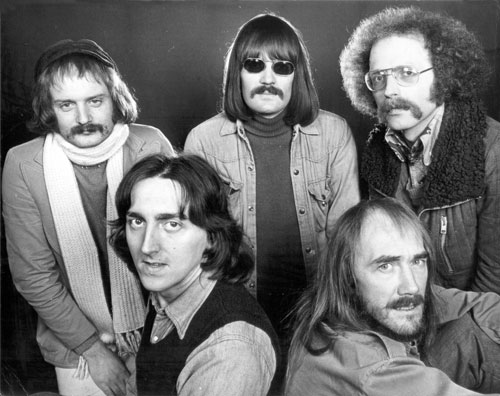 |
SOFT MACHINE
SWITZERLAND 1974
Cat. #: Rune 395/396, Format: CD+DVD
Genre: Canterbury / Fusion / Jazz Rock, Release Date: February 3, 2015
STREAM/SHARE: "Hazard Profile" (excerpt)
@SOUNDCLOUD / @BANDCAMP / @YOUTUBE
At the end of 1973, the British band Soft Machine embarked on a fresh start. In December 1973, it added guitarist Allan Holdsworth (recently with Jon Hiseman’s Tempest, and previously Nucleus) to its line-up, which then consisted of Soft Machine founding member and keyboardist Mike Ratledge, along with pianist and saxophonist Karl Jenkins, bass player Roy Babbington, and drummer John Marshall. Jenkins and Ratledge then composed a whole new repertoire, which the band road-tested on extensive tours of North America and continental Europe in the first half of 1974. That material eventually made up Soft Machine’s eighth recording, the first not named after its order of release: the album Bundles, widely acknowledged as a jazz-rock / fusion classic. When released by EMI's Harvest Label in early 1975, Bundles would secure Soft Machine’s role in the transcontinental jazz-rock pantheon alongside Return To Forever and Mahavishnu Orchestra in the USA, and Nucleus, Brand X, and Isotope in the UK.
Soft Machine’s status in the international jazz/rock avant-garde was widely apparent even before Bundles’ official release. On July 4, 1974, Soft Machine performed at the prestigious Montreux Jazz Festival in Switzerland, sharing the spotlight with such headliners as Billy Cobham’s Spectrum, Larry Coryell’s Eleventh House and the Mahavishnu Orchestra. This Montreux appearance was evidence that Soft Machine was a dominant presence on the widely popular jazz-rock scene of the time – a scene that the band had helped create, one that evolved out of the radically unique sound it had pioneered only a few years before. Soft Machine was an influential presence on both the rock and jazz scenes in the UK and the Continent throughout its lifetime, reflected in the band receiving invitations to prestigious festivals and high rankings in the music polls.
Cuneiform’s Switzerland 1974 is a DVD+CD set featuring their Montreux performance, captured just a couple of weeks before Soft Machine’s studio sessions in London for Bundles. The hour-long set, licensed by Cuneiform from Eagle Rock Entertainment and the Fondation du Festival de Jazz de Montreux, is the only available visual document of Soft Machine’s Ratledge-Marshall-Jenkins-Babbington-Holdsworth line-up. Soft Machine perform the entire Bundles album live, most notably the classic “Hazard Profile” suite, augmented with individual showcases for each member as well as a collective improvisation and brief snippets from Six and Seven. As well as retracing Soft Machine’s transformation into one of the leading exponents of jazz-fusion, Switzerland 1974 provides a rare chance to witness the genesis of Allan Holdsworth’s unique, innovative and unbelievably fluid and dexterous playing, before he went on to universal acclaim with Tony Williams’ New Lifetime, the prog-rock ‘supergroup’ U.K., Gong, Jean-Luc Ponty, Bill Bruford and ultimately his own electric fusion groups.
Soon after, with Karl Jenkins firmly at the helm following Ratledge’s retirement from music, the direction set by Bundles would serve as the template for Soft Machine’s subsequent albums. Jazz fusion informed 1976’s Softs and 1978’s live release Alive And Well – Recorded In Paris, both with John Etheridge replacing Holdsworth on guitar. In 1981, Soft Machine released its final studio effort, Land Of Cockayne, and in 1984 it played a final series of gigs at London’s Ronnie Scott’s club. Decades later, a number of Soft Machine members would come together to form Soft Machine Legacy, a band dedicated to keeping Soft Machine’s musical heritage alive. The Soft Machine Legacy presently consists of former Softs John Etheridge, Roy Babbington and John Marshall plus Theo Travis on saxes and flute – is. Meanwhile, Allan Holdsworth is still touring with his own trio while Karl Jenkins is enjoying spectacular success as a composer of classical/world music fusion.
Switzerland 1974 is the ninth Soft Machine CD released by Cuneiform. Each of Cuneiform’s Soft Machine releases have focused on rare and previously unreleased recordings, documenting different lineups of the band, now extending about 7 years, from Autumn, 1967 to Summer, 1974. Tracing the evolution of Soft Machine’s music over personnel and time; presenting rare tapes to the public, usually for the first time; and helping to expose this legendary band to new audiences in the 21st century, Cuneiform’s Soft Machine recordings are essential for long-time Soft Machine fans and captivating introductions for those approaching the legendary band for the first time.
PROMOTIONAL TRACK //
If you'd like to share music from this release with your friends, please feel free to use the following track:
 "Hazard Profile" (excerpt): @SOUNDCLOUD / @BANDCAMP / @YOUTUBE
"Hazard Profile" (excerpt): @SOUNDCLOUD / @BANDCAMP / @YOUTUBEVIDEO //
[Switzerland 1974 DVD Trailer]
PURCHASE LINKS //
AMAZON - BANDCAMP - WAYSIDE MUSIC
ARTIST SITES //
www.cuneiformrecords.com

No comments:
Post a Comment